Bay Weekly’s Labor Day Parade of Working People
Reza Akbari, 52, Dunkirk
Retired Air Force Master Sargent … Patient Safety/Risk Manager at Patuxent River Naval Air Station … owner Silk Road Antiques
For me, one career has led to another. The military was always my first love. Less than one percent of the population serves in the United State’s Armed Forces, and I am privileged to be one of those few. I went into the Air Force in 1987 and served as a medic in Turkey, Italy, Saudi Arabia and the U.S. before retiring in 2011.
My Middle Eastern background and my ability to speak Farsi/Dari landed me a job as an interpreter in Afghanistan following my military retirement. Due to my military experience, I was chosen as the lead interpreter supervising 50 other interpreters enforcing strict counter-intelligence protocols. This was a dangerous occupation under austere conditions with daily missile attacks.
My time in the military not only enabled me to travel, but also to earn a degree in health care administration. When I left Afghanistan, I found a job as a Patient Safety/Risk Manager at Patuxent River Naval Health Clinic.
I began collecting and learning about handmade rugs and other exotic objects when I was first stationed in Turkey. It soon became my passion. I would visit antique shops around the world and think about what my own store would be like. I envisioned distinctive antiques, furniture, fine arts … with no dust, no clutter, calming accent lighting, good music and a nice smell for an unparalleled pleasant shopping experience. I opened Silk Road Antiques in Edgewater in April, and my shop meets all those expectations.
I work at Pax River Monday through Friday — my aunt Marci and wife Shahrzad are at the shop on weekdays — but Silk Road is my passion and future. I do all the buying, cleaning and merchandising, and on the weekends, I am here helping my customers find beautiful objects.
Chuck Adams, 62, Annapolis
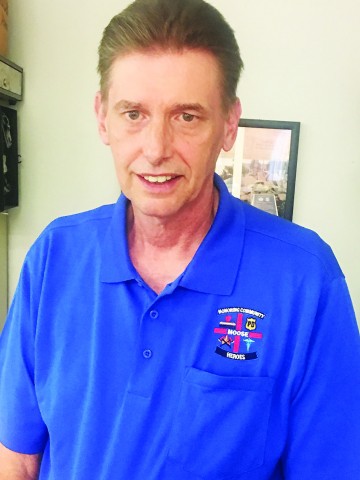
Administrator: Annapolis Moose Lodge
I started working at 12 as a bagger in Jerman’s IGA grocery in Gambrills. I was an Anne Arundel County police officer from 1975 to 1984 when I was shot in the line of duty. Back in 1977, I also started CCA Tile Company, which grew after I left the police force.
I’ve been with the Moose Lodge for 12 years. My job as an administrator is to oversee day-to-day activities and to promote the mission of the Moose fraternity. That mission is to support our child city, Mooseheart, our seniors at Moosehaven, and our local communities. I’m proud to be the chairman of our Valor Program, which honors our community’s first responders. As a retired police officer this program holds special meaning for me. When the horrible tragedy happened at the Capital-Gazette building on June 28, our lodge members and I reached out to the departments that responded. We’re honoring them for their service with a dinner and awards ceremony on Sept. 6.
In all my jobs, the No. 1 skill was the same: Respect is earned. Treat people with respect.

Midh Ahm, Holland Point
Art teacher through the non-profit Bay Arts Center in the studio area of Chesapeake’s Bounty market in North Beach
I graduated in the spring of 2017 from the Maryland Institute College of Art with a degree in illustration. I teach art as meditation plus anatomy and portraiture, with the goal of helping students of all ages to believe in themselves and empower their creativity. I am very excited to share what I’ve learned and to bring out the artist in everyone who attends, no matter what training they have had or what has transpired in their lives to stifle their artistic endeavors.
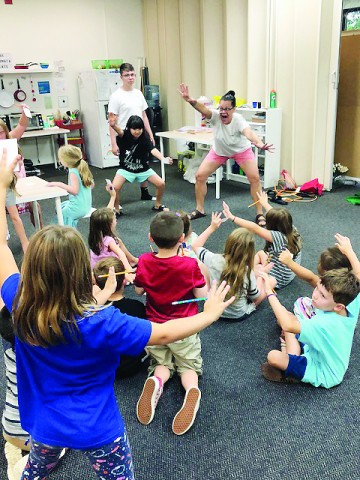
Aly Wirth Cross, 43, Deale
Children’s acting teacher, The Polymath Place
I want people to think of Polymath as the place where kids ages four through 18 come for acting lessons.
I started teaching here in January 2018 after 10 years teaching at Stageworkz in Millersville. Before that, I was pounding the pavement and waiting tables in New York City, working in fringe theater.
An essential skill in my job is being able to command attention and keep it. In a room full of busy, distractible kids, I have to be able to use my voice and figure out how to communicate on a child’s level. I have to know how each kid ticks. Sometimes I have to mirror actions back to them for them to understand what I am saying.
Overall, I want children to feel this is a safe space where you can be anything you want to be. Nobody will judge you in this space. I hope they realize that I can look stupid or feel weird but it’s okay because I can be myself or I can act like a tiger and roar if I want to. It’s okay.
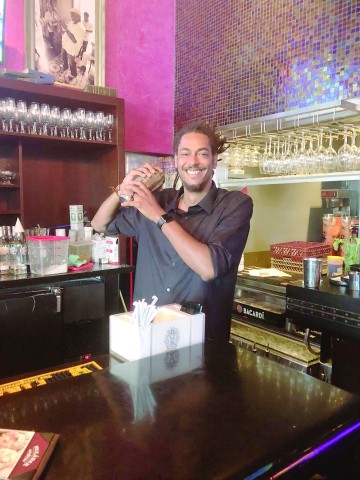
Ryan Johnson, 33, Pasadena
Head bartender
I came to Paladar in May of last year. I started serving, but really, I wanted to be behind the bar.
On a daily basis I make hundreds of mojitos and margaritas. We prep three different purees and mixers from scratch. I really enjoy putting together cocktails, but I’m a people person. Customer service is always my priority, and I meet some incredible people every day.
I love the people I work with. I think that’s key to a positive work environment. We have a great crew at Paladar. We all love to make money, meet new people and have fun along the way.
I’ve dedicated a lot of my time to learning about the hundreds of rums we have in our bar. I take pride in my knowledge of rum and of our Latin cuisine. I think what really sets me apart, though, is that I’m usually the tallest, most noticeable guy in the room.
My growth really comes from my own curiosities; I’m not afraid to try new things. My manager, Danielle Stevens, has helped me find my way as a bartender at Paladar. I would say she’s the reason I’m there today and enjoying what I do.

Sam Hopkins, 28, Germantown
Wildlife response technician, Maryland Department of Natural Resources
Any time an animal is reported as acting funny or injured or trapped, we step in. I show up and assess the situation. My priority is to figure out if I can make life better for this animal. First I have to figure out, depending on the severity of its injuries, if the animal can be saved and transported to a wildlife rehabilitator.
A skill that has served me well in this job is creativity. Animal rescue shows on TV have all this specialized gear and equipment. But when you are out in the field — often by yourself — you have to be able to figure out a clever way to work with what’s on hand. These are things that weren’t taught in college.
Sometimes I do have to put an animal down. Then I have to figure out how to move, say, a 130-pound adult deer into my truck, maybe a long distance, over fences or obstacles. So I developed my own tarp technique, and I rigged up a pulley system in my truck that I can work by myself. It’s one of my cooler inventions.
I always have a blanket or sheet. I get a lot of calls about birds of prey that have fallen out of the nest. With a towel or a sheet handy, you can just bundle them up.
Every day is different. Some days it’s deer all day long; some days it’s getting a groundhog unstuck from a fence or saving a raccoon trapped on a porch. Variety makes it fun and entertaining for me.
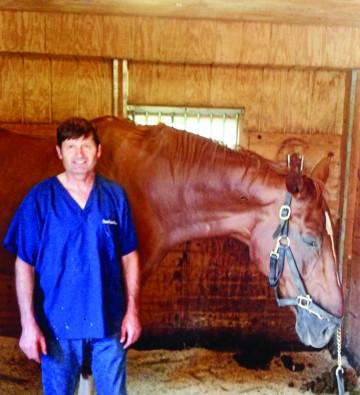
Bruno Favre, 64, Harwood
Equine dentist
I fell in love with horses growing up in Lyons, France. I was four years old when my grandfather first took me to the races. After that, I was hooked. I wanted to be a jockey, and for a while I trained to be one. I also used to train racehorses.
I’ve worked so long with horses; I could never give it up. Becoming an equine dentist was the best way for me to make sure I stayed around horses for life. I sure got lucky with this job.
I’ve helped mini horses and I’ve helped Clydesdales — the size of the animal doesn’t matter. Usually I’m pulling teeth. I help young horses get rid of baby teeth, and I pull teeth that hinder bits. I work on my own and make house calls to farms and racetracks in the area. Probably 40 percent of the horses I work on are show horses; the rest are racehorses.
I’m pleased I found a way to stay around horses for life. I even wrote a book about my journey as a horse addict: Little Bruno and the Horse Virus.
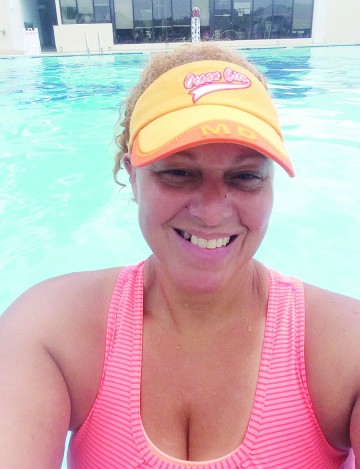
Candace Gunn, “50 and fabulous,” Owings
Certified fitness professional and well-being coach; Calvert Parks and Recreation Aquatics coordinator
I want to give people a good workout that focuses on their total well-being, not just the physical. Most times, the hardest part is getting out of the door. I want to show them the ability to change begins way before the music starts to play. I want to give them a good time in the process of reaching and exceeding their fitness goals.
My students range in age from preschoolers to well into their seasoned years. Keeping in mind that no two people are alike, I strive to work to each person’s ability and tailor programs around their specific needs. Sometimes getting them all the way into it takes the energy of a drill sergeant, the enthusiasm of a 10-year-old, the dynamism of a rock musician, the moves of Mick Jagger. But most of all, it takes a heart to want to reach people of all abilities and diverse backgrounds and journey alongside of them to help navigate through the obstacles they face in being the best versions of themselves. My goal is to encourage them to reach deep inside and get them to smile from the inside out. Once that is accomplished, working out and changing their lifestyle choices is no longer a drudging task but becomes a way of life that can be shared and enjoyed.
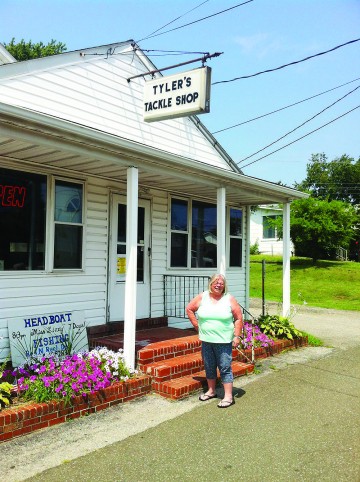
Pearl Tyler King, Owings
Owner, Tyler’s Tackle Shop and Crab House: Chesapeake Beach
I grew up in St. Mary’s County and moved to Owings when I married my husband, Calvin Tyler Jr., in 1980. That’s when I started working at Tyler’s Tackle Shop. My husband died in 1990, and I’ve been here now 38 years. What I really love the most is meeting people and helping them to get the fishing equipment they need. I make about 10 different types of lures from flounder to rock, and sometimes I get to teach the visitors that come down here how to fish — surf, bottom, trolling, you name it, I know it. I love this place and wouldn’t trade being here for nothing.
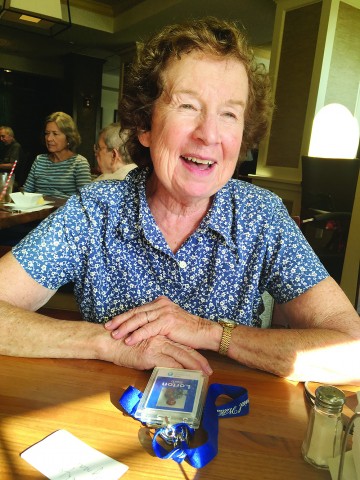
Barbara Lorton, 73, Solomons
Cellist, pianist, teacher, writer
My cello and upright piano are in the living room. The Patuxent Baroque, Calvert Chamber Players, St. Paul’s Episcopal Church, Dowell and Appeal schools and fellow musicians for quartets are up the road or across the Patuxent. Music is my full-time life.
I’ve also taught fourth and fifth grades, written a play and published Sydney Seagull Marks Lighthouses and Buoys of the Chesapeake. My mission in this part of my life has been to help today’s children to understand what musicians, composers, writers and environmentalists have been and still are creating.
Daniel Hinz, my husband, plays the piano and accordion and shares my life of music.

Del. Joseph E. Valerio Jr., 81, Upper Marlboro
44-year delegate to the Maryland General Assembly and, as chair of the Judiciary Committee, the House of Delegates’ longest serving chairman; lawyer
Over the years, I represented as a way to return to the community. Whether it was the roads, support of local schools or construction for the betterment of the people, I did my best to serve for others. I stayed committed to do my part.
I was able to see so many great people in office and follow them.
Serving in the House of Delegates for so many years, I was able to keep up on all of the new laws. As I was responsible for making changes to them, I remained at the forefront of all new issues. This is very helpful for my law practice as well as serving to the best of my ability in the General Assembly.
I am so thankful to have been chosen to represent the people and have the opportunity to serve my districts. It was a true honor.
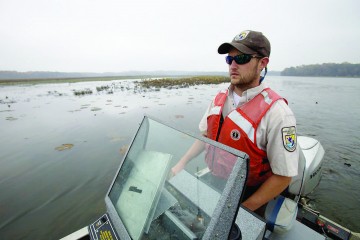
Josh Newhard, 34, Annapolis
Fisheries Biologist, U.S. Fish & Wildlife Service, Maryland Fish and Wildlife Conservation Office
I grew up in Delaware fishing in the ocean, ponds and creeks. Between my love for fishing and interest in marine life — especially sharks — I pursued a career in marine biology. In college I learned I could focus on fish. I was sold, though I never imagined what I’d end up doing.
The variety of work can be a challenge but rewarding and fun. From being on the lookout for invasive northern snakeheads to helping restore American eel and American shad and talking with people reporting striped bass/horseshoe crab tags up and down the East Coast, I stay quick on my feet!

Autumn Phillips-Lewis, Lusby
Land manager, American Chestnut Land Trust
One thing that’s essential to my job is adapting to very different tasks with different groups of volunteers every day. Nature is unpredictable, and the projects we work on really vary. One day we’re trying to maintain trails hit hard by the weather. The next, we’re fighting back invasive plants that threaten the ecosystem. Plus we’re constantly monitoring the changing health of our forests, streams and meadows. A lot of this is really physically demanding work, and it couldn’t get done without the help of volunteers. So keeping them passionate about the difference they’re making, helping them see it and be proud of it, is also essential to our success.
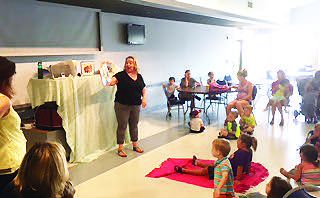
Sandy Hunting, Chesapeake Beach
Children’s librarian, Calvert Library Twin Beaches
Children’s brains develop at an astonishing rate in the first several years of their lives. That is why it is such a joy and an honor to help the youngest members of our community to learn and to grow. I still remember my 16-year-old son’s first story-time librarian, and I’d like to think that one day there will be kids who can say the same of me. After nine years and hundreds of kids, I hope that I have played a small part in molding the next generation.
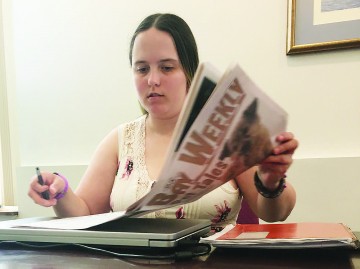
Cassi Whitehead, 21, Davidsonville
Student at University of Pittsburgh, Bay Weekly summer intern
As a Bay Weekly intern, I wrote articles, updated the website and edited and proofread pages.
One skill that came in handy is fixing sentences that don’t make sense. When I read a sentence and I can’t figure out what it’s trying to say, I look at the rest of the story for context clues to try to figure out what the author meant to say. From there, I decide if the sentence can be fixed by changing some words, or if it needs its structure changed. The final sentence is always easier to understand.

Ellie Pesetsky, 20, Huntingtown
Student at University of Pittsburgh, Bay Weekly summer intern
In high school, I began writing in my free time as a creative outlet. At the time, I did not imagine it would turn into my career.
Interning at Bay Weekly, I worked in writing and publishing, learning key skills that I will take with me into my junior year at the University of Pittsburgh and my future.
I knew that communication skills are essential to working in this field. At Bay Weekly, I learned that meant introducing myself, thinking up and asking questions, listening, recording what I learned and putting it into stories.
In my time at the newspaper, I had to interview people by phone and in person. Reaching out to strangers has been hard for me, but the more I practiced the better I got. Not only did I gain confidence, I also met some new and interesting people and used their words and the information they gave me to write stories under my own byline, Ellie Pesetsky.

Keri Luise, 20, Towson
Student at Towson University, Bay Weekly summer intern
This summer, I expanded on my experiences and learned new skills in my dream career of journalism.
I learned a lot about journalism and the inner workings of a weekly newspaper as a Bay Weekly intern. One essential part of the job that I learned is the importance of crowdsourcing. As a reporter, you need to be able to know who it is you need to talk to and not be afraid to ask your questions. I worked hard to make sure I talked to the right people for a story and asked the questions Bay Weekly readers would want to hear answers to. I understood who my audience was and made sure to present information that they would want to hear.
My internship at Bay Weekly was one of the best experiences I have had. Now I am a third-year student at Towson University, writing for the campus paper The Towerlight and learning as much as I can.

Stephen Hayden, 37, Huntingtown
Honeysucker
What makes a person enter the field of septic tank draining? Would it be the glamour, the fame or the excitement?
For Stephen Hayden, it was a natural extension of the family business. On jobs with his dad Paul, the master plumber of Paul Hayden Jr. and Sons Plumbing, the young Hayden would often find that drains weren’t clogged; the septic tank was full. To fix the problem, they would have to call another company. Stephen suggested starting a septic business so they could offer full service to their customers. He is now in his 20th year working the septic side of the company, performing perc tests, installing drain fields and, of course, draining tanks.
The upsides of the job, Hayden says, is that he is his own boss and there is plenty of work. The down side is working in all types of weather. I joined him and son Stephen Jr., in pouring rain, as they searched for a homeowner’s tank with a five-foot metal probe.
Hayden repeatedly jammed the probe in the ground. When it hit a hard surface, he then worked his way along searching for the end of the tank. Then he and his son began digging, looking for the tank’s hatch. Hayden scooped out dirt with his shovel, feeling for the hatch’s edge. Then he cleared away the remaining dirt and slipped a rope through the eyebolts attached to the hatch. Using the rope, he lifted the cover revealing a two-foot-by-two-foot opening in which he lowered the suction hose.
When the tank was drained and hosed down with fresh water, Hayden replaced the hatch. He rinsed the outside and inside of the suction hose, disconnected the hose sections and carefully placed them on the back of his $250,000 truck. He and his son then shoveled dirt back into the three-foot hole they had dug. The entire process took about an hour.
Bidding farewell, they headed off to the Appeal landfill in Lusby, where the 4,700-gallon-capacity truck would be drained at the sewage processing plant behind the landfill.
As long as there are septic tanks, Hayden’s job will always be needed. So he’s training the next generation, bringing his son to work during the summer months.
